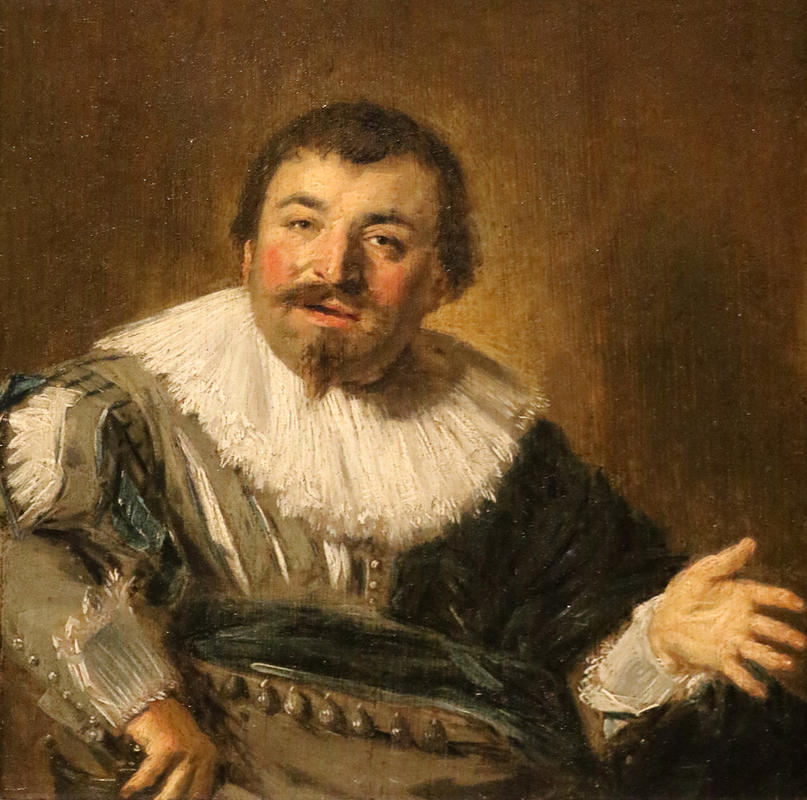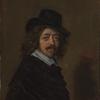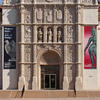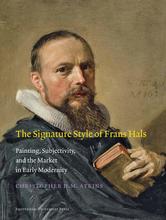More about Portrait of Isaac Abrahamsz. Massa
- All
- Info
- Shop

Contributor
Frans Hals’ Portrait of Isaac Abrahamsz Massa, along with his other portraits of the man are some of the most wholesome pieces of work in art history.
In the vast oceans of paintings of artist’s lovers posed as half-nude figures from the Bible, and portraits of rich patrons illustrated to make them look more attractive than they actually were, here we have a simple and honest piece one man painted of his bro.
Frans Hals was an extremely talented Dutch painter who during his time was only rivaled by Rembrandt. He left his mark on the world by painting in a uniquely loose style that some mark as a precursor to Impressionism. The sitter Isaac Abrahamsz was a successful grain trader who bore witness to the two year famine that killed off nearly a third of the Russian population, and the era of political upheaval that followed. However, this portrait isn’t about those things.
This is more like a candid snapshot that one person takes of another for no other reason than one friend wanting to try and capture the raw and jovial humanity radiating from his buddy. Frans painted at least five pictures of Isaac, the most famous being in their native country at the Rijksmuseum. All of these images are amazingly filterless. In each, Isaac is displayed with all his blemishes - his nose is always too big, his face is always too round, and his mustache always looks ridiculous, yet despite this he is always framed in a sincerely loving way. Of the few things we know about the artist and his subject, one fact is that Isaac had gone to see Frans’ son’s baptism, and oddly this fact perfectly defines the intimate and yet everyday relationship we see here.
For all we know Frans could have invited Isaac while painting this picture, subsequently capturing his friend in a pose that eternally says, “Yeah sure man, I don’t have anything else going on.” And honestly is there any sentence in existence that is more welcomed than that?
Sources
- Descargue, Pierre “Frans Hals” Encyclopædia Britannica, 02/06/19 https://www.britannica.com/biography/Frans-Hals
- Frans-Hals.org. “Frans Hals Complete Works” Frans-Hals.org, date accessed 07/14/19 http://www.frans-hals.org/
- San Diego Museum of Art Contributor “Portrait of Isaac Abrahamsz. Massa” San Diego Museum of Art, 01/27/16 http://collection.sdmart.org/Obj1404?sid=278&x=23584&port=2851
- Upclosed. “Isaac Massa” upclosed.com, date accessed 07/14/19 https://upclosed.com/people/isaac-massa/
Featured Content
Here is what Wikipedia says about Portrait of Isaak Abrahamsz. Massa
Portrait of Isaak Abrahamsz. Massa is a 1626 oil-on-canvas painting by the Dutch artist Frans Hals that is in the collection of the Art Gallery of Ontario. It depicts Isaac Massa, a prosperous merchant and a close friend of Hals. Massa was the subject of an earlier work by Hals – Isaak Abrahamsz Massa and Beatrix van der Laen – which also featured his wife. Massa commissioned another portrait by Hals in 1635, which is in the San Diego Museum of Art.
The painting is inscribed with the date 1626, but there is no mention of the identity of the sitter. For many years this led to debate, and it was often assumed to be a self-portrait. Wilhelm Valentiner was a noted proponent of this theory. Other scholars, such as Numa S. Trivas, did advance the idea that it was a portrait of Massa, and this was confirmed by the discovery of an inscription on a seventeenth-century engraving.
The 1626 portrait is noted for its informality and vitality. Massa appears leaning over the back of a chair, a significant departure from standard formal portrait poses of the period. Hals would later use similar poses in a number of other paintings, and it would also be employed by other artists in later centuries. Massa's expression is candid, distracted. He is relaxed and engaged in his own affairs. Hals's brush strokes too are quick and free instead of smooth and controlled, which not only contributes to Hals's distinct style but also allowed him to complete an entire painting in one sitting, which accounts for the high volume he produced in his lifetime. Many of Hals's contemporaries were students of Caravaggio, influenced by his strong chiaroscuro. Though Hals may also have looked to Caravaggio his use of light is even, but Hals still manages to create bold highlights of Massa's facial features – the right side of his face is illuminated while the left falls into a natural shadow.
Massa had made his fortune as a silk merchant in Russia, and was a noted expert on the country. The view through the window of large coniferous trees may be intended to reflect this, it being a scene of Muscovy where much of Massa's trading was conducted. The landscape in the background may have not been painted by Hals, perhaps being the work of noted landscape artist Pieter de Molijn. In Massa's hand he holds a sprig of holly. In traditional symbolism this represents friendship and constancy, and may reflect the close relationship between the artist and subject. It has also been interpreted as Massa's pledge to be faithful to his wife during his long absences.
For many years the painting was part of the collection of the Earls of Spencer. The 1822 Bibliotheca Spenceriana, a catalogue of the Spencer collection, describes it as hanging in one of the bedrooms of the estate. In 1924 the 7th Earl Spencer was forced to sell off part of the family collection to pay down debts. He sold the Hals, along with other works to art merchant Joseph Duveen. The next year Duveen sold the painting to Canadian businessman Frank P. Wood. Upon Wood's death in 1955 his collection was given to the Art Gallery of Ontario, which is where the portrait still resides. In 1959 the painting was stolen from the gallery, along with five other masterworks. The insurance company agreed to pay a ransom for the stolen pictures, and three weeks after disappearing the painting was recovered from a storage room in Parkdale. It had sustained only slight damage.
-
Hals's Marriage Portrait of Isaac Massa and Beatrix van der Laen, 1622, at the Metropolitan Museum of Art, New York
-
Another 1622 portrait of Isaac Massa by Frans Hals; this one is at Chatsworth House
-
Hals's 1635 portrait of Massa, at San Diego
-
1665 portrait by Hals of an unidentified man in the same pose as the Toronto portrait, showing the artist's style in his old age, with looser brushwork
Check out the full Wikipedia article about Portrait of Isaak Abrahamsz. Massa













